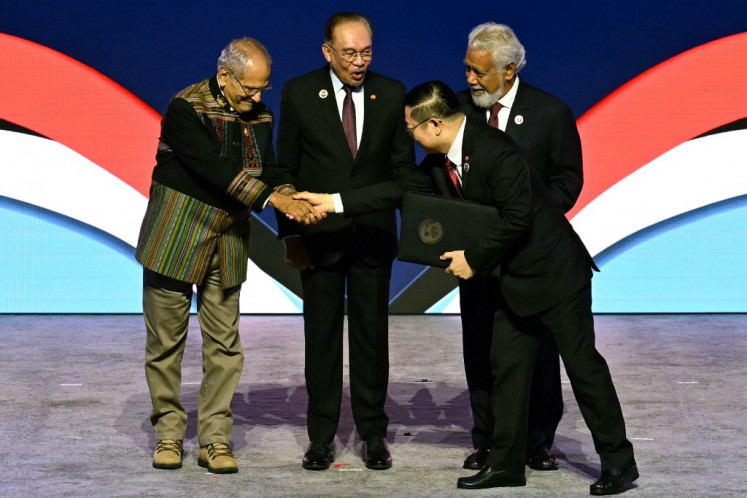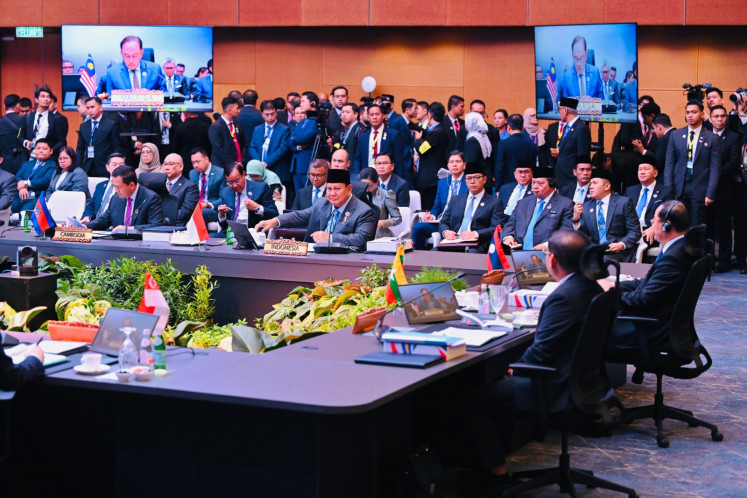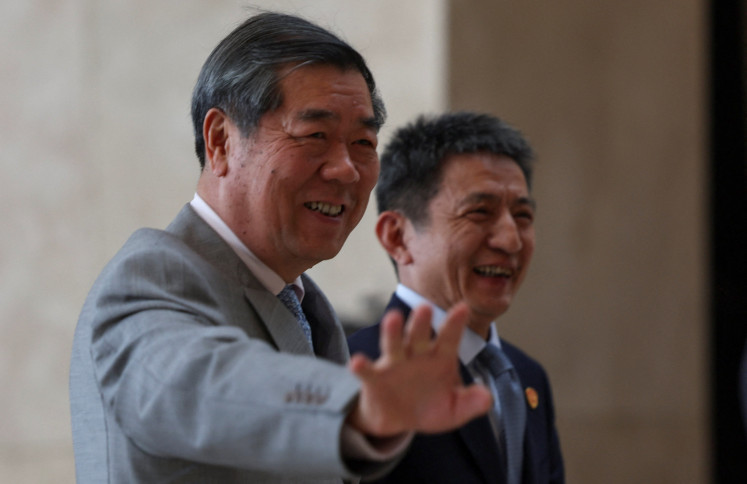Popular Reads
Top Results
Can't find what you're looking for?
View all search resultsPopular Reads
Top Results
Can't find what you're looking for?
View all search resultsSupreme Court: Public trust and judicial independence
The Supreme Court of the Republic of Indonesia holds its National Working Meeting (Rakernas) on Sept
Change text size
Gift Premium Articles
to Anyone
T
he Supreme Court of the Republic of Indonesia holds its National Working Meeting (Rakernas) on Sept. 18-22, 2011. Unlike the previous event, all chief judges throughout the country have been invited to the annual meeting.
At least there are two crucial issues that need immediate responses from the court and its subordinate courts: public confidence and judicial independence, which are related to each other. Public trust will be achieved with the presence of independent judiciary, and judicial independence will come true with full support of faithful public.
Despite some radical changes in legal reforms since the reformasi era and the introduction of the one-roof system in 2004, Indonesians still have little trust in or respect for the court.
This can be seen from the survey results of the Public Sector Integrity published by the Corruption Eradication Commission (KPK) in September last year. The court’s integrity is considered below average and ranked only 29 out of 39 the state institutions surveyed. This finding should encourage the judiciary to improve its performance.
Low public trust in the judiciary will jeopardize legal certainty and law enforcement because the court’s decisions would not then be respected by the public.
Apart from its “taken-for-granted” condition as the weakest branch of power compared to legislative and executive (Hamilton, 1981), the little public trust stems primarily from what Reiling (2009) calls the three most common complaints to the judiciary all over the world, namely access to court, delays and corruption (integrity).
The Supreme Court actually developed a so-called Blue Print on Judicial Reform in 2003 and it was renewed in 2010 as guidelines for judicial reforms until 2035.
The curt set five reform priorities for the next five years: limiting appeal cases, instituting a chamber system, restructuring organization, improving human resources and increasing access to justice.
The court claims to have been doing a considerable numbers of changes. However, the public seem unaware of the changes and deem the court as stagnant. The public’s perception is reinforced by the arrest of several judges by the KPK for taking bribes and other wrongdoings.
Public trust will be restored if the court boldly and immediately responds to complaints about access to court by ensuring information transparency, avoiding delays through fair judgments handed down in a timely and speedy manner while at the same time strengthening the integrity of its officials.
One thing that the court is lacking is the management of public communication. An effective way to communicate what has been done with the broader community should be sought. In other words, the Supreme Court must not only conduct judicial reforms, but also show that the reforms are taking place.
The other vital issue is judicial independence. Many factors led to the impression that the Supreme Court is neither decisive nor institutionally independent. Judges’ integrity, public pressure, political interventions from the legislative and executive are to name a few among others.
It is like a vicious circle. No single solution can solve the problem of judicial independence. But what Pompe (2005) offers is quite interesting. Rather than delivering justice in every single case, the court should bring uniformity in the administration of justice throughout the judicial system in Indonesia. That way legal certainty and broader justice can be widely provided. As a result, uniformity and legal certainty would be the measure whether or not the court or judges are independent.
The role of the Judicial Commission (KY) in helping realize judicial independence is also essential. The Commission should cooperate with the Court to reach the goal. Both institutions should reconsider their “unfriendly” relation for the sake of the future of Indonesian judiciary.
If we look at another source, it should be admitted that in fact public trust toward the judiciary is not that bad. According to a survey, funded by AusAID in 2007-2009, 70 percent of court users were satisfied with the services provided by the general and religious courts. That is a significant number compared to the low public trust that has been claimed so far.
Furthermore, there is an interesting finding about the religious courts which many of us might be unaware of. Amid the lack of trust and respect for the Indonesian courts, a number of international scholars see the religious courts as an exception because the courts are working reasonably well (Lev, 1999) and are a relative success story amid a dysfunctional judicial system (Cammack, 2007).
Moreover, in terms of socially oriented judicial reforms, Lindsey and Sumner (2010) noted that religious courts are a model not only for Indonesian courts but also for other Islamic courts in Southeast Asia.
Strong leadership and effective use of information and communication technology are identified as the two key factors for the courts.
The Supreme Court’s vision to create a great judiciary will not be accomplished without the existence of both public confidence and judicial independence.
The writer is a postgraduate student at the Melbourne Law School at the University of Melbourne, Australia.










